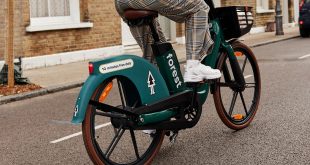By Gunnar Froh, Founder and CEO, Wunder Mobility
Operators and city authorities alike are capitalising on growing consumer demand for shared micromobility. They are doing this not only by bringing new services to cities, but also by evolving existing businesses and turning to more innovative business models to increase revenue streams, attract new users and strengthen the loyalty of existing customers. Through our work with over 100 shared mobility operators across 900 cities globally, we’re seeing five key trends right now:
Moving beyond the rent-per-minute model
The first rent-per-minute car sharing was introduced by car2go in 2009, but it wasn’t until 2017, when scooters started appearing in North America, that minute-based models began to gain widespread adoption.
Today, we are seeing a growing trend for micromobility operators to offer daily, weekly and even monthly rental options, as well as mid-to-long-term subscription options. This is in addition to their existing rent-per-minute offering. These operators are proving that different rental models aren’t mutually exclusive but can complement each other by providing a far greater degree of flexibility to the end user. This variety of available rental models puts the power squarely in consumers’ hands to decide not only what type of vehicle they want, but also to choose the most cost-effective rental model to meet their needs.
Tapping into commercial partnerships
It’s exciting to see that some mobility operators are looking beyond rental models when it comes to diversifying their revenue streams. A great example of this is Avocargo, a shared electric cargo bikes operator based in Berlin, which is collaborating with local partners to offer free driving minutes.
These commercial partnerships not only provide consumers with cheaper deals and therefore greater incentives to ride, but also help mobility operators to acquire new users by organically tapping into their partner’s customer base.
The rise of the ‘mobility super app’
Another trend that we’re seeing is that increasing numbers of operators are turning to aggregators – the so called ‘mobility super apps’. These apps are a one-stop-shop giving users an overview of all the transport options available in their area, from one simple interface. This enables users to seamlessly plan, book and pay for journeys across different transport options, and across a range of private and public mobility providers.
Partnering with aggregators helps micromobility operators to generate additional demand for their services, allowing them to increase the utilisation of their own fleet. For example, FREE NOW, which is available in over 100 cities worldwide, has partnered with various mobility operators within its app, to empower users to design their journeys with greater flexibility.
Encouraging customer loyalty
Mobility operators are not only looking to attract new customers, but also to build loyalty with existing ones. This is of growing importance as the number of new operators in the market increases. A great example of a customer loyalty scheme is from the London-based e-bike and e-moped sharing operator HumanForest, which has created a program that enables riders to earn ‘TreeCoins’ according to how far they ride. These TreeCoins can then be exchanged for free ride minutes. In a similar vein, in Germany, moped sharing scheme Emmy provides 15 minutes of free ride time each month to users who have ridden eight times or more in the previous month.
More diversified fleets
Finally, we are starting to see shared mobility operators diversifying their fleets to offer a wider range of vehicles – a move that helps them to meet varying needs of the same consumer in different situations. Evolving to offer different vehicles is undoubtedly a substantial decision that impacts daily business operations, so there are a range of factors that need to be considered before taking the plunge – from understanding consumer demand, to identifying government policies around topics such as helmets and parking.
But even as mobility operators continue to innovate with their business models and their vehicle offerings, a consistent truth remains – key to the ongoing success for mobility providers is providing a brilliant customer experience. Even as the industry matures and changes, reliability, connectivity and the range of the vehicle are still just as important today as they ever were.
Gunnar Froh is founder and CEO of Wunder Mobility. To learn more about shared mobility from experts in the industry, listen to the Wunder Mobility Podcast.
 micromobilitybiz Delivering news updates to the micromobility industry, focusing on e-bikes, e-scooters and green transport
micromobilitybiz Delivering news updates to the micromobility industry, focusing on e-bikes, e-scooters and green transport




